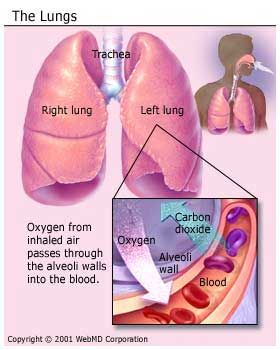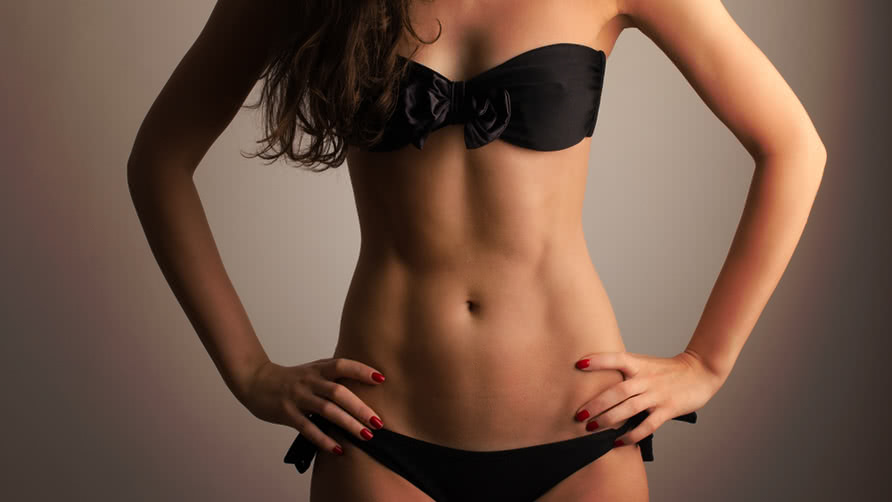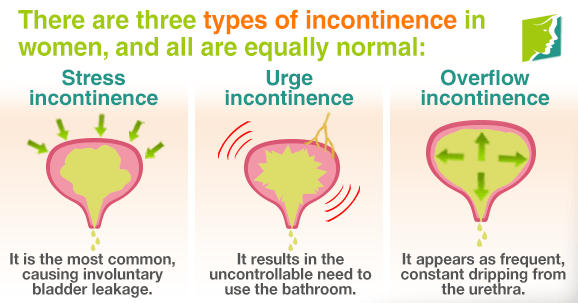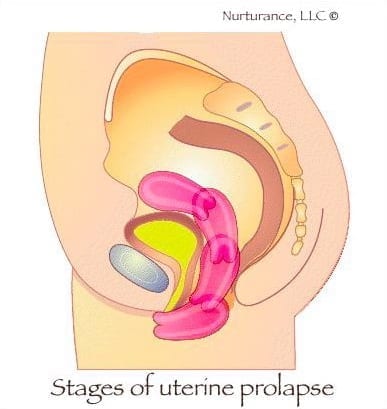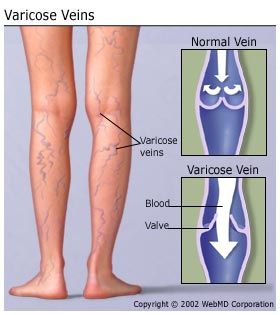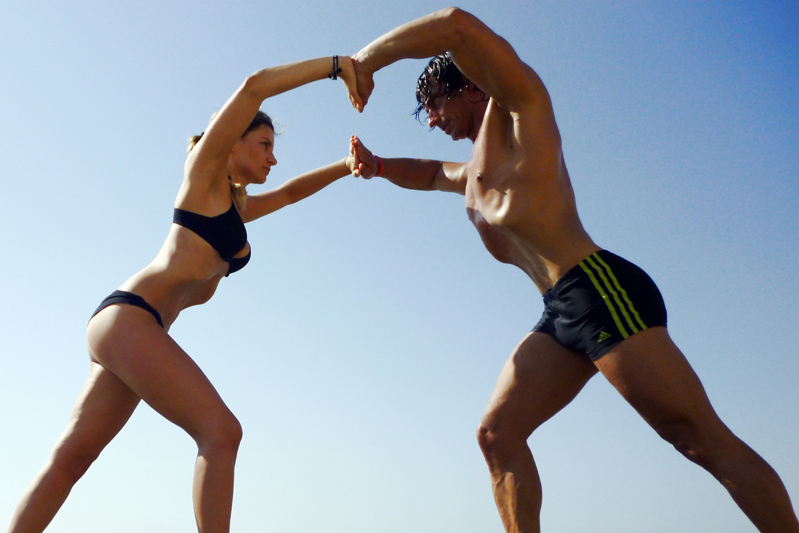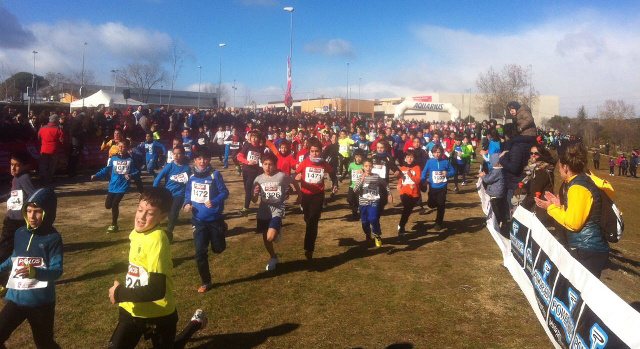Do you feel your
sexual desire is decreasing? Would you like to feel greater pleasure or gain
control over your sex organs? Do you think a more intense sex life would foster
your relationship?
Hypopressives are a
kind of exercise (easy, painless and free!) whose followers claim to experiment
an increase in desire, sensation and control during the sexual practice.
Not only will this technique improve your sex life, but it is also been shown to:
- sculpt a toned and fit mid-section
- reduce waist circumference and waist-to-hip ratio
- decrease urinary incontinence
- better physical performance and respiratory function
- improve back health, posture and balance
- treat and prevent hernias and prolapses
- fight constipation
- aid with depression, post-partum recovery and scar healing
To know more about it
see my previous post Wish I had known them before: Hypopressives.
As promised, today we are going to go deeper into the effects of hypopressives on sexual function and learn 9 ways in which they make your sex life more enjoyable.
1. Better proprioception and awareness of the pelvic floor muscles
During the performance
of a HP there is a phase of abdominal vacum in which your gut is completelydecreases ligament
tension, resulting in the repositioning
of your internal organs, both
in the short and long term.
sucked
in. This practice
In 2011 it was proven
through magnetic resonance imaging (MRI) that HT relocate your viscera and can
be used as a proprioceptive resource (mechanism that enhances the capacity to feel the position of your own muscles).
Bear in mind that most women are unable to even contract
their pelvic muscles or identify their genitals, mainly because of poor
proprioception and body squeme. Thus, better
proprioception and awareness of the pelvic floor muscles will greatly intensify
sexual sensitivity and genital control.
2. More testosterone, more libido, more sexual desire.
 |
| acemenkuat.weebly.com |
It is an androgen:
it activates the development of male
features. Thus, its concentration is greater in man than women where it is
essential for the maturing of male reproductive organs and sperm.
It is also responsible for indicating the body to create blood cells, ensuring the
strength of bones and muscles, regulating the secretion of follicle stimulating
and luteinising hormones, and enhancing libido.
Testosterone
deficiency is detrimental during foetal development as it will lead to sex development issues. Low levels during
puberty will hinder the boy's sexual development and growth. He will also
suffer from poor strength and endurance
as his limbs grow disproportionate
with the rest of his body.
Testosterone levels naturally decline with age (it is even
referred to as the men menopause or andropause). Unfortunately, low levels are
associated with:
 |
| vivienveil.files.wordpress.com |
· Loss of body hair in men
· Parchment skin
· Mood swings
· Increased body fat
· Erectile dysfunction
· Poor sexual performance
· Bone decalcification or osteoporosis
· Lack of concentration
· Memory loss
· Sleep problems
Testosterone, key
hormone in sexual desire and libido, can be increased through physical exercise. This stressor induces the body
to make hormonal changes in order to adapt to it. The response varies depending
on intensity, type of training and personal factors, but testosterone is
generally increased after intense physical activity, whether aerobic or anaerobic, chronic or acute.
Hypopressives strongly
stress the body as the exercises not only
require great muscular activation, but also create an intermittent oxygen deficit. Consequently, testosterone
can be effectively increased, resulting in all the aforementioned benefits.
3. Let that endorphin rush kick in
 |
| 2.bp.blogspot.com |
Not only is pain reduced, but endorphins also produce a strong feeling of euphoria, regulate appetite, release sex hormones (like testosterone, see previous epigraph) and enhance the immune system. Endorphins alleviate pain and stress, bringing well-being and pleasure in order to reward us for doing something convenient, like exercising, feeding, or having sex. Their task is to motivate us to continue doing those activities and to draw us into a reward circle, a feedback loop in constant search for pleasure.
4. No more erectile dysfunction (ED)
Studies suggest that
between 10 to 52% of men, especially
between 40 to 70 years old, suffer from ED. Unfortunately, this condition is increasingly common and is set to double by the year 2025.
 |
| i.blogs.es |
Hence, enrolling in any kind of physical activity, like hypopressives, will have a positive impact on ED and lead to more pleasant and enjoyable sex life.
5. Increased genital and perineal vascularisation
The area needs to be highly vascularised in order to improve irrigation and hence the attainment of pleasure.
It is widely accepted that physical exercise promotes angiogenesis, which is the creation of new blood vessels.
Furthermore, it is been shown to significantly increase genital sexual arousal after only 15 min (after 5 min of exercise it was marginally decreased) through sympathetic nervous system (SNS) activity.
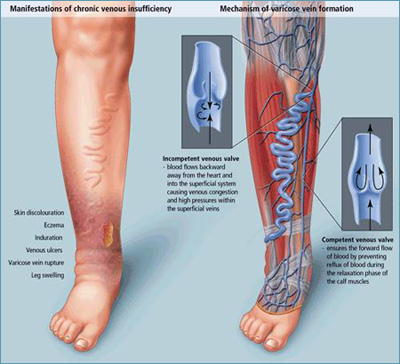 |
| healthresource4u.com |
Wherefore, we can conclude that exercise may help reach orgasm and augment vaginal discharge.
More specifically, hypopressives have been proven to better femoral venous return which can be extremely helpful for people suffering from varicose veins.
6. Reduced stress
These are known to inhibit gonadotropin releasing hormone (GnRH), the body's main sex hormone, resulting in low sperm count, no ovulation and impaired sexual activity.
In addition, stress also triggers the production of gonadotropin-inhibitory
hormone (GnIH), which undermines
reproduction even more by suppressing GnRH.
 |
| lh6.ggpht.com |
Besides, stress also causes low testosterone: steroid hormone essential for bone, hair and muscle growth, sexual function, appropriate levels of red blood cells and feeling trim and healthy.
As explained before, exercise, including hypopressives, effectively increases testosterone levels. Therewithal, it will decrease anxiety, stress and depression while increasing dopamine and serotonin, neurotransmitters involved in the regulation of movement and emotional responses, and in the transmission of nerve impulses, respectively.
(For more physical, mental and cognitive benefits of exercise see my previous post Watching TV means impaired health and intelligence?)
It is no surprise that
having an efficient body will make
your sexual experience more enjoyable.
Even patients with chronic stable heart failure (CSHF) can improve their sexual function in the short term with moderate exercise.
Moreover, hypopressives, which emphasize proper breathing and posture, are known to increase forced volume and maximum exhaling flow after 6 weeks of training.
This is because HT efficiently work your diaphragm, which plays a key role in breathing, as well as the muscles in charge of inhaling and exhaling, resulting in an improvement of respiratory (peak flow) parameters and respiratory conditions like asthma.
Even patients with chronic stable heart failure (CSHF) can improve their sexual function in the short term with moderate exercise.
Moreover, hypopressives, which emphasize proper breathing and posture, are known to increase forced volume and maximum exhaling flow after 6 weeks of training.
This is because HT efficiently work your diaphragm, which plays a key role in breathing, as well as the muscles in charge of inhaling and exhaling, resulting in an improvement of respiratory (peak flow) parameters and respiratory conditions like asthma.
8. Higher self-esteem
Having a positive body image will make your sexual life more enjoyable, enhance your initiative and enable you to amuse yourself without inhibition.
High self-esteem might also improve your capacity to deal with stress which, as mentioned before, is detrimental for sexual desire.
Moreover, low self-steem and emotional distress are associated with unhealthy sexual behaviours like having risky and/or multiple partners, and unprotected sex. Likewise, they were also correlated with initiating sex earlier and having more partners per year of sexual activity.
9. Stronger pelvic floor, increased sexual arousal
A 2014 cross-sectional study of forty women between 20 and 28 years showed that those with stronger pelvic floor muscles scored higher in desire, excitement, and orgasm. Pelvic floor muscle pressure was moderately correlated with sexual satisfaction and lubrication.
A 2010 study of one hundred seventy-six women aged 26-48 years revealed that those with strong or moderate pelvic floor muscles (PFM) scored significantly higher on the FSFI orgasmic and arousal domains, concluding that "both the orgasm and arousal function are related to better PFM function."
Hypopressives have been shown to efficiently tone your pelvic floor muscles:
| encrypted-tbn0.gstatic.com |
In a 2007 study, 100 women with poor pelvic tone and urinary incontinence performed 20 min of HP everyday for 6 months, resulting in an increase in pelvic floor tone by 58% and in shock absorption capacity by 48%. Furthermore, there was a 20% increment in contractile muscle strength and a significant 6% reduction in waist girth.
A 2014 study on professional female rugby players showed that hypopressives increase perineal and abdominal contractile strength.
That same year, a blind cross-sectional study of forty-two women aged 20-65 years who performed 30 daily minutes of hypopressives three times a week for 8 weeks revealed a significant increase in pelvic floor muscle tone.
This study also
reported a decrease in waist
circumference and waist-to-hip ratio (WHR), better dynamic and static posture,
balanced spine curvatures, an increase in hamstring extensibility, reduced lumbalgia
and feelings of satisfaction and well-being.
References
Bloor, Colin M. "Angiogenesis during
Exercise and Training." Angiogenesis
8.3 (2005): 263-71. Web.
Bø K, Mørkved S., (2007). Motor learning.
In: Bø K, Berghmans B, Mørkved S, van Kampen M (eds) Evidence based physical
therapy for the pelvic floor: bridging science and clinical practice.
Elsevier,
Churchill Livingstone, pp 113-119.
Bo, K., Larsen, S, Oseid, S, Kvarstein, B.
Hagen, R., Jorgesen, J. (1998). Knowledge about and ability to correct pelvic
floor muscle exercise in women with urinary stress incontinence. Neurol Urodyn.7, 261-2.
Belardinelli,
Romualdo, Francesca Lacalaprice, Ernesto Faccenda, Augusto Purcaro, and
Gianpiero Perna. "Effects of
Short-term Moderate Exercise Training on Sexual Function in Male Patients with
Chronic Stable Heart Failure." International Journal of Cardiology
101.1 (2005): 83-90. Web.
Bump, R, Hurt, WG, Fantl, JA, Wyman, JF.
(1991). Assesment of kegel pelvic muscle exercise performance adfter brief
verbal instruction. Am J
Obstet Gynecol.165, 322-8.
Carvalho, Celina
Cordeiro De, Danielle Augusta De Sá Xerita Maux, Tetsuo Tashiro, and Sílvia
Regina Arruda De Moraes. "The Effect of Endurance
Training on the Neovascularization of Skeletal Musculature." Acta
Cirurgica Brasileira Acta Cir. Bras. 21.6 (2006). Web.
Conrad Stoppler, M.
(2014, January 12). Endorphins: Natural Pain and Stress
Fighters. MedicineNet. Web.
Derby, C., Beth, M., Goldstein, I., Feldman, H., Johannes, C.,
McKinlay, B. (2000). Modifiable risk factors and erectile dysfunction: can
lifestyle changes modify risk? Urology. 56(2),302-306.
Ethier, Kathleen A.,
Trace S. Kershaw, Jessica B. Lewis, Stephanie Milan, Linda M. Niccolai, and
Jeannette R. Ickovics. "Self-esteem, Emotional Distress and Sexual
Behavior among Adolescent Females: Inter-relationships and Temporal
Effects." Journal of Adolescent Health 38.3 (2006): 268-74. Web.
Francis, K. T.
"The Relationship between High and Low Trait Psychological Stress, Serum
Testosterone, and Serum Cortisol." Experientia 37.12 (1981):
1296-297.Web.
Fukui H, and Yamashita
M. "The Effects of Music and Visual Stress on Testosterone and Cortisol in
Men and Women." Neuro Endocrinology Letters 24 (2003): 173-180.Web.
García Gutiérrez
Eulalia, Aldana Vilas Laura, Lima Mompó Gilda, Espinosa Riverón Ma. del
Rosario, Castillo Castillo Caridad, Felinciano Álvarez Vladimir. "Disfunción
sexual masculina y estrés." Rev Cub
Med Mil. 34.1 (2005). Web.
Hamilton, Lisa Dawn, Emily A. Fogle, and
Cindy M. Meston. "The Roles of Testosterone and Alpha-Amylase in
Exercise-Induced Sexual Arousal in Women." The Journal of Sexual Medicine 5.4 (2008): 845-53. Web.
Hsiao W, Shrewsberry AB, Moses KA, Johnson
TV, Cai AW, Stuhldreher P, Dusseault B, and Ritenour CWM. (2012). Exercise is
associated with better erectile function in men under 40 as evaluated by the
international index of erectile function. J Sex Med, 9, 524-530.
Latorre, G., Seleme, M., Resende, A.P.,
Stüpp, L. y Berghmans, B. (2011). Hipopressive gymnastics: evidences for an
alternative training for women with local proprioceptive deficit of the pelvic
floor muscles. Fisioterapia
Brasil, 12(6), 463-466.
Lorenz, Tierney A.,
and Cindy M. Meston. "Acute Exercise Improves Physical Sexual Arousal in Women
Taking Antidepressants." Annals of
Behavioral Medicine Ann. Behav. Med. 43.3 (2012): 352-61. Web.
Lowenstein, Lior, Ilan
Gruenwald, Irena Gartman, and Yoram Vardi. "Can Stronger Pelvic Muscle
Floor Improve Sexual Function?" International Urogynecology Journal Int
Urogynecol J 21.5 (2010): 553-56. Web.
Martinez,
Caroline S., Fernanda V. Ferreira, Antonio A.m. Castro, and Liana B. Gomide. "Women with Greater Pelvic Floor Muscle
Strength Have Better Sexual Function." Acta Obstetricia Et Gynecologica Scandinavica Acta
Obstet Gynecol Scand 93.5
(2014): 497-502. Web.
Meston, Cindy M., and
Boris B. Gorzalka. "The Effects of Immediate, Delayed, and Residual
Sympathetic Activation on Sexual Arousal in Women." Behaviour Research and Therapy 34.2 (1996): 143-48. Web.
"New Findings on
How Stress Causes Sexual Dysfunction and Infertility." News-Medical.net. 16 June 2009. Web.
Prieto, R,
Campos, P, Robles, R, Ruíz, J. Requena, MJ. (2010). Epidemiología de la
disfunción eréctil: Factores de riesgo. Arch. Esp. Urol. 63(8), 637-639.
Rial, T.;
Chulvi-Medrano, I.; Fernández, T. HEMATOLOGICAL RESPONSES OF DIAPHRAGMATIC
ASPIRATION ON SPLENECTOMIZED SUBJECT. A CASE STUDY. (2014). Universidad Católica San Antonio De Murcia.
Rial, Tamara.
"FUNCIÓN SEXUAL, EJERCICIO FÍSICO E HIPOPRESIVOS." Fisioterapia
On-line. Web.
Soriano Segarra,
María Lledó. "Efecto De La Gimnasia Abdominal Hipopresiva Sobre El Tono
Del Suelo Pélvico Y Otros Parámetros Antropométricos, Funcionales Y
Relacionados Con El Riesgo Cardiovascular En Mujeres." Repositorio
Universitario Institucional De Recursos Abiertos (2014). Web.
Sprouse-Blum; Smith;
Sugai; Parsa. Understanding Endorphins and Their Importance in Pain Management.
(2010). Hawaii Medical Journal,
69(3), 70-71.
Sutoo, Den’Etsu, and
Kayo Akiyama. "Regulation of Brain Function by Exercise." Neurobiology
of Disease 13.1 (2003): 1-14. Web.
"Testosterone
Deficiency, Erectile Dysfunction, and Testosterone Replacement Therapy." WebMD. Web.
Testosterone. (2015,
January 6). You & Your Hormones. Society for Endocrinology.
Thyl, S., Aude,
P., Caufriez, M., Balestra, C. Incidence de l'aspiration diaphragmatique associée à une apnée
expiratoire sur la circulation de retour veineuse fémorale: étude par
échographie-doppler. (2009). Kinésithérapie scientifique, 502, 27-30.
Young, S. "How to
increase serotonin in the human brain without drugs."Journal of
Psychiatry and Neuroscience (2007).
Web.
